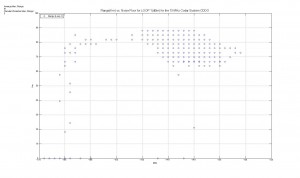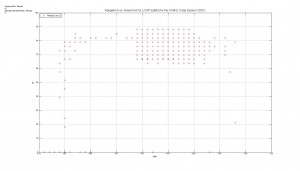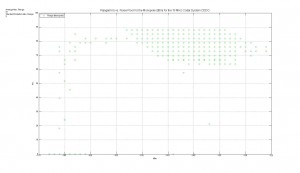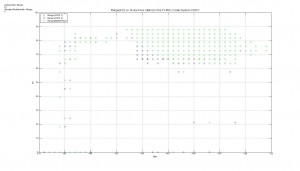-
Range (km) versus Noise Floor (dBm) levels for the 13 MHz Codar System CDDO
Posted on June 19th, 2009 No commentsAs it can be seen on the plots the average of the range we obtained for the average Noise Floor we have (-145 dBm) is 81 Km. The plots obtain for the CDDO site demonstrate that during its time functioning the range has maintain considerably stable around 80 km with a noise floor level around -144 dBm which is relatively good. In a plot where the Noise Floor levels have a lot of fluctuation the expected behavior of the plot is to see low range at high noise levels (less negatives values) and higher ranges in the lower noise levels. Because the Noise Floor level stays relatively stable at -145 dBm we obtain about the same range most of the time. It’s important to clarify that the “range” that is being analyzed is the distance from the radar which the data will have a good level of confidence. The distance that the signal travels is going to be always the same but the distance at which the data becomes realistic depends on the external and internal components interfering with it.
One important component that interferes with the signal is noise. Noise can be either internal or external and can limit the range of systems for a given transmitted power. Some of the external noises that can affect the signal are produce by: wind, the atmosphere, the galaxy, interference with communication sources, thunderstorms, sun, man-made noises such as electrics motors, automobiles, neon signs, power lines, etc.







